Because marionberries don’t train themselves
There’s a big difference between a garden patch and an honest-to-goodness farm field. It’s not just increased acreage or more plants. There’s a whole new approach to how you seed, cultivate and harvest when you make the transition from gardener to farmer. We saw this when we planted this year’s crop of Prickless Marionberries. Our crops in previous years were small by professional standards. But this spring we grew our little patch into a two-acre field, planting 1602 marionberry starters by hand.
Lesson 3: You can learn a lot about growing marionberries by growing hops.
Like hops, marionberries are born to climb. And also like hops, they need a trellis. In the garden, that may be a wooden trellis you can buy at your local nursery. On Rogue Farms, we built our trellis from scratch, digging poles into the ground and connecting them by wires. The similarities don’t end there. Both crops need to be trained.
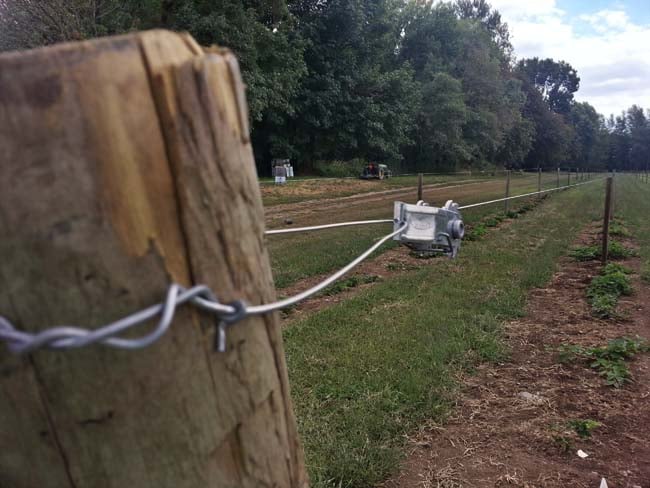
Back in August we pulled all the long marionberry canes off the ground and trained them by hand, tying the canes to the trellis wires with coir, the same material we use to train and tie hops. There was no harvest this season. Marionberries don’t produce the year they’re planted because they need to go through a hard frost before they’ll grow fruit. But we’re confident of a good crop next summer. Here’s why.
Prickless marionberries are perfectly matched to the terroir of the Willamette Valley. They need cool, but not cold, temperatures in winter, and long sunny days in summer. This is no accident. Marionberries were developed 60 years ago by the USDA and Oregon State University right across the river from our farm in Marion County, Ore. Today, they grow so well here that Oregon produces nearly all of the crop in the United States.
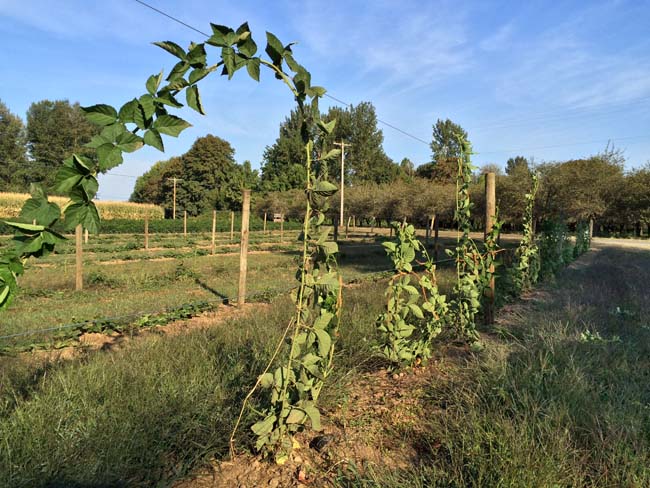
The untold story about our marionberries is their relationship with the Rogue Farms honeybees. When the tiny, white flowers pop next year, these trellises will be filled with millions of bees, happily foraging among the blooms collecting nectar and spreading pollen.
With the best marionberry terroir in the country, and with the help of our honeybees, we’re looking forward to strong harvests of marionberries and honey next summer. What we pick we’ll juice, and what the bees provide we’ll gather. Then we’ll deliver both crops to John in Newport where he will go to work brewing Rogue Farms Marionberry Braggot.
Plan bee
By the time Autumn rolls around, the Rogue Farms honeybees are in survival mode. All they’ve got to get by through the winter is the honey stored in the hive and the supplemental feed we provide them. And so begins the culling season. The first to go are the drones. Mating season is over and the male bees no longer serve a purpose. They’re dragged outside and left on their own to die of exposure and starvation.
Lesson 4: It sucks to be a drone in the fall at Rogue Farms.
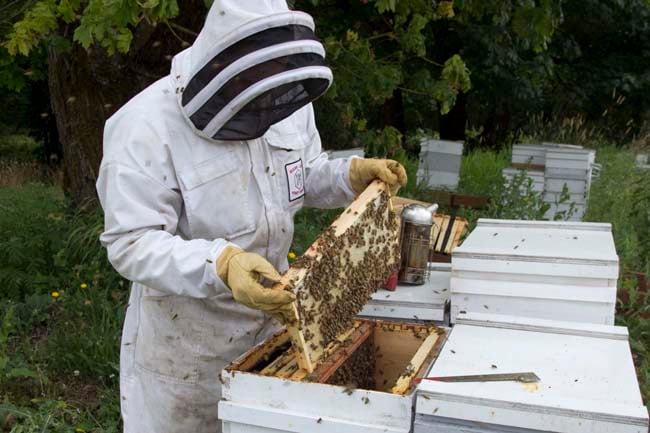
Inside the hive, the queen has stopped laying eggs. The population of the colony drops dramatically. From a summer peak of 70,000 to 100,000 bees per colony, the population shrinks to 10,000 to 15,000 bees in winter. Our job now is to help our bees survive the cold months. We’ll put out sweet syrup, pollen cakes and water, so the bees can feed themselves. If necessary, we treat for mites and diseases.
Come February, we send our bees south to pollinate a California almond orchard. The warm temperatures and ample supplies of nectar and pollen keeps them healthy until they return to us in spring. We’ll greet them with a display of wildflowers, orchard flowers and flowering marionberries, pumpkins, jalapeños and botanicals. From spring through summer, our bees sample all the flavors of the terroir of Rogue Farms. You’ll taste it too, in the honey we use to make our kolsch, meads and braggots.
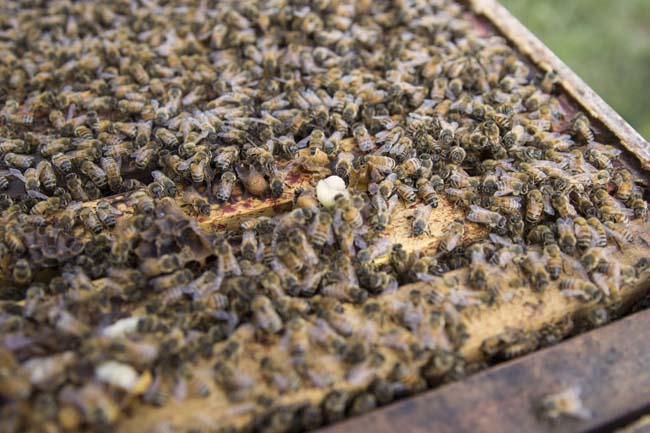
Putting our hops to bed
In the hopyard, our seven varieties of hops are settling down for winter, a period of dormancy. The bines are dying off, returning their nutrients down beneath the soil to the rhizomes, where it will be stored until next spring’s growing season. We’ll give them an assist by adding a layer of composted bines and coir from previous harvests. This will seep more nutrients into the dirt and retain moisture.
In the next few weeks, we’ll plant spring barley between the rows of hops. This is a cover crop, grown only to prevent soil erosion during winter floods. Because we’re planting it out of season it won’t grow kernels and will die off in the spring. Before the winter rains arrive, the barley will form a thick carpet over the hopyard. The network of roots keeps the soil in place, and when it floods the stalks will lie down for added protections.
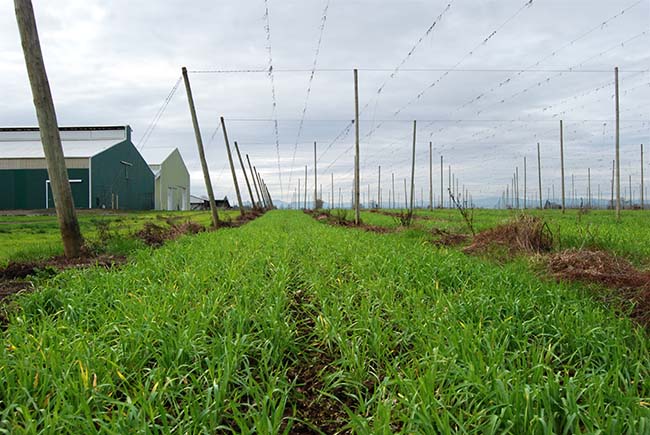
Lesson 5: Floods happen.
We wouldn’t stop them if we could. Flooding replenishes the soil with moisture and nutrients at a time when hops need them the most. Each time it floods, the water releases another layer of rich, volcanic sediment on the hopyard. Flooding is how Mother Nature grows dirt.
This information was all provided from the fine folks at Rogue Ales & Spirits and the Rogue Department of Agriculture. Big ole thanks to Rogue Farms for letting us reproduce this.

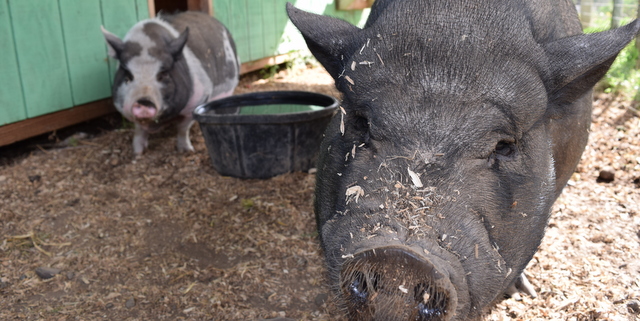
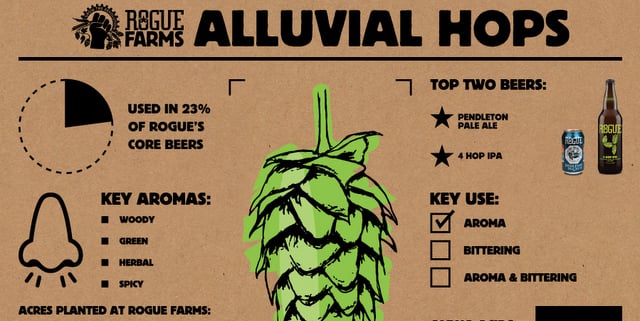
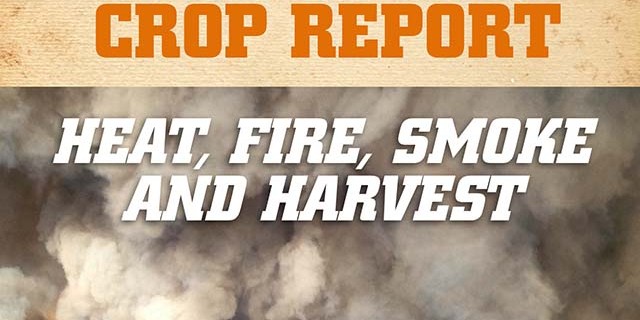
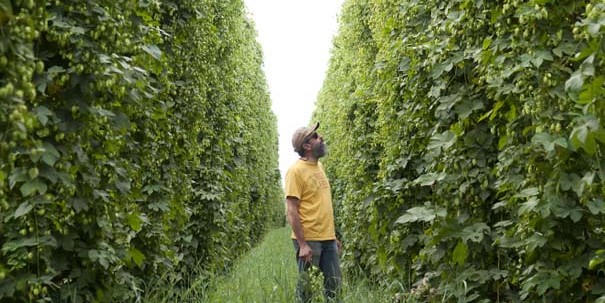
If #agricultureporn isn’t a thing yet, it starts with this photo of jalapeños drying in a hop kiln. https://t.co/G8qsdMv8NY @craftbrewingbiz
Alx HB liked this on Facebook.
@CraftBrewingBiz @RogueAles If #agricultureporn isn’t a thing yet, it starts with this photo of @RogueFarms jalapeños drying in a hop kiln.
Jim Sung liked this on Facebook.
Rogue Farms Crop Report Autumn 2015 (a grand photo blog) https://t.co/zIUM1oZDmT via @craftbrewingbiz
RT @CraftBrewingBiz: Check out the Rogue Farms Crop Report — Autumn Edition (a photo blog): @RogueFarms @RogueAles https://t.co/vQdAxkYfri
RT @CraftBrewingBiz: Check out the Rogue Farms Crop Report — Autumn Edition (a photo blog): @RogueFarms @RogueAles https://t.co/vQdAxkYfri